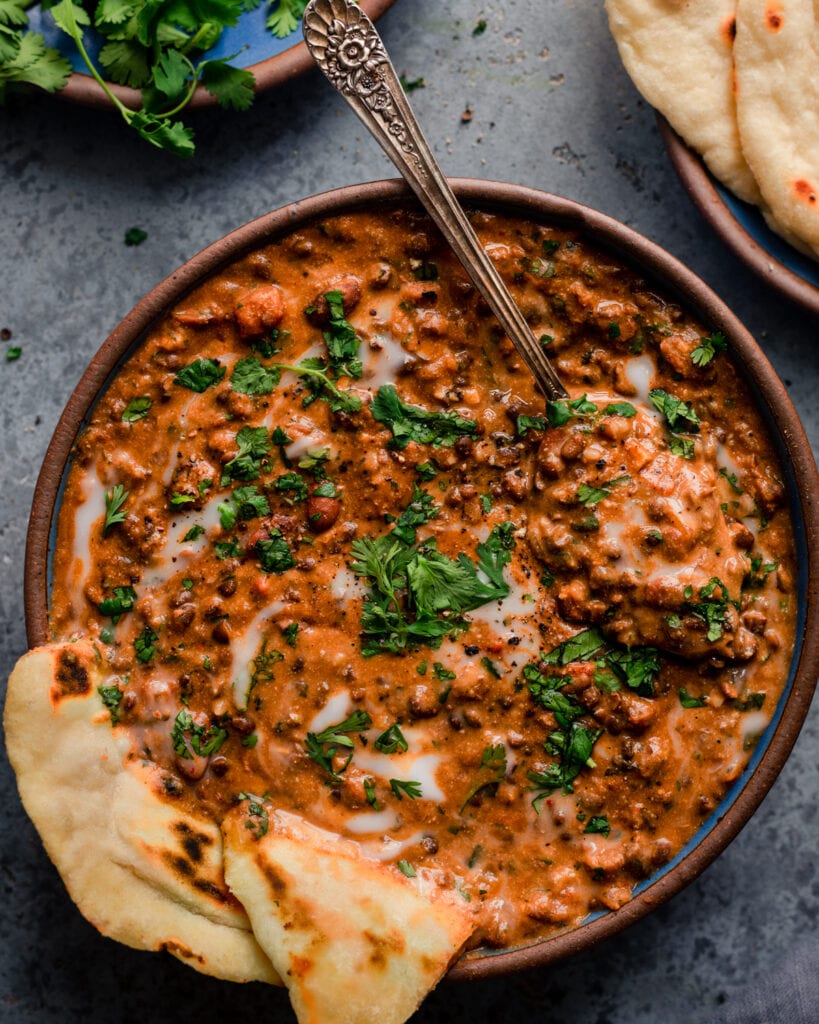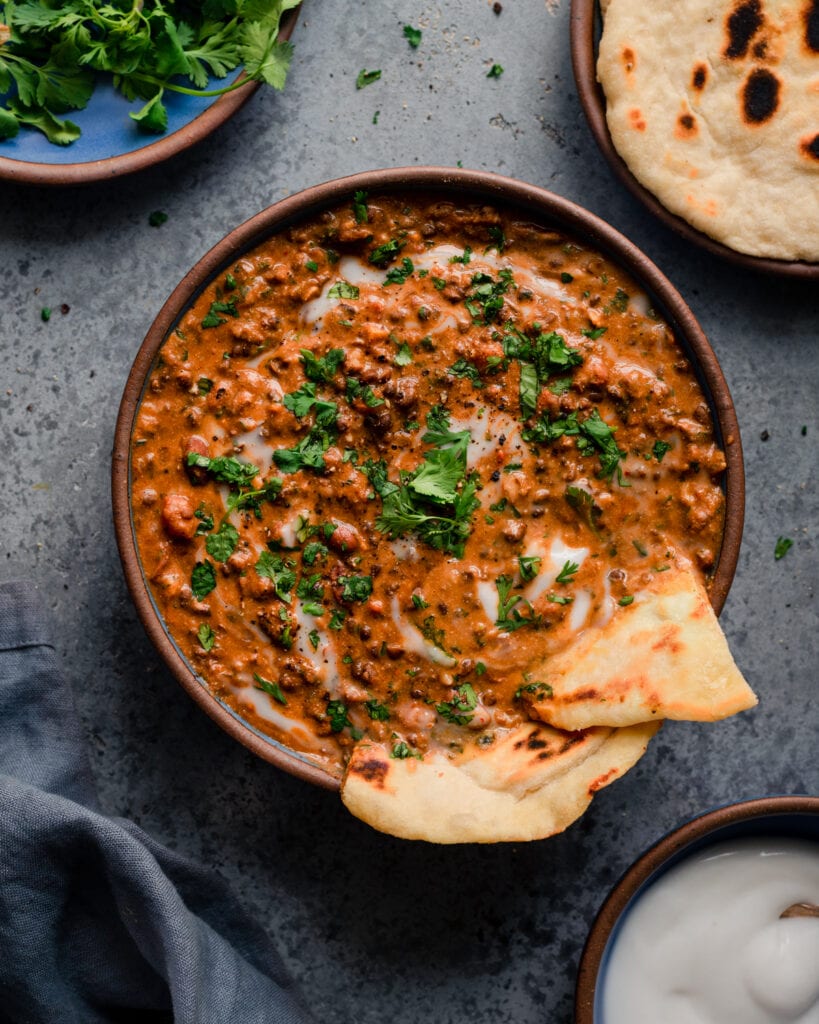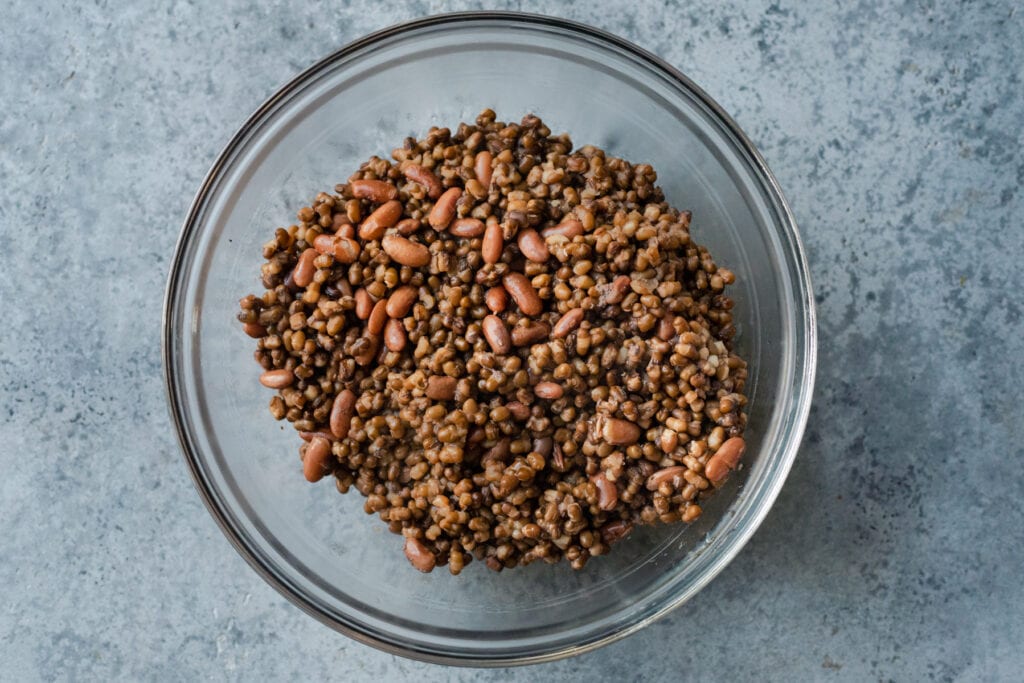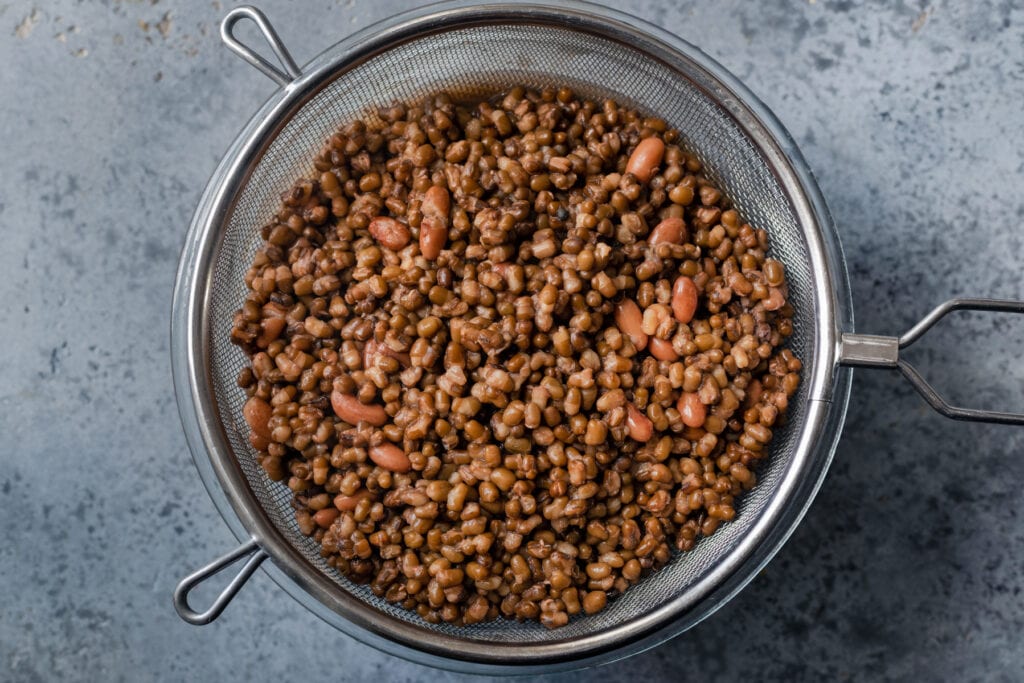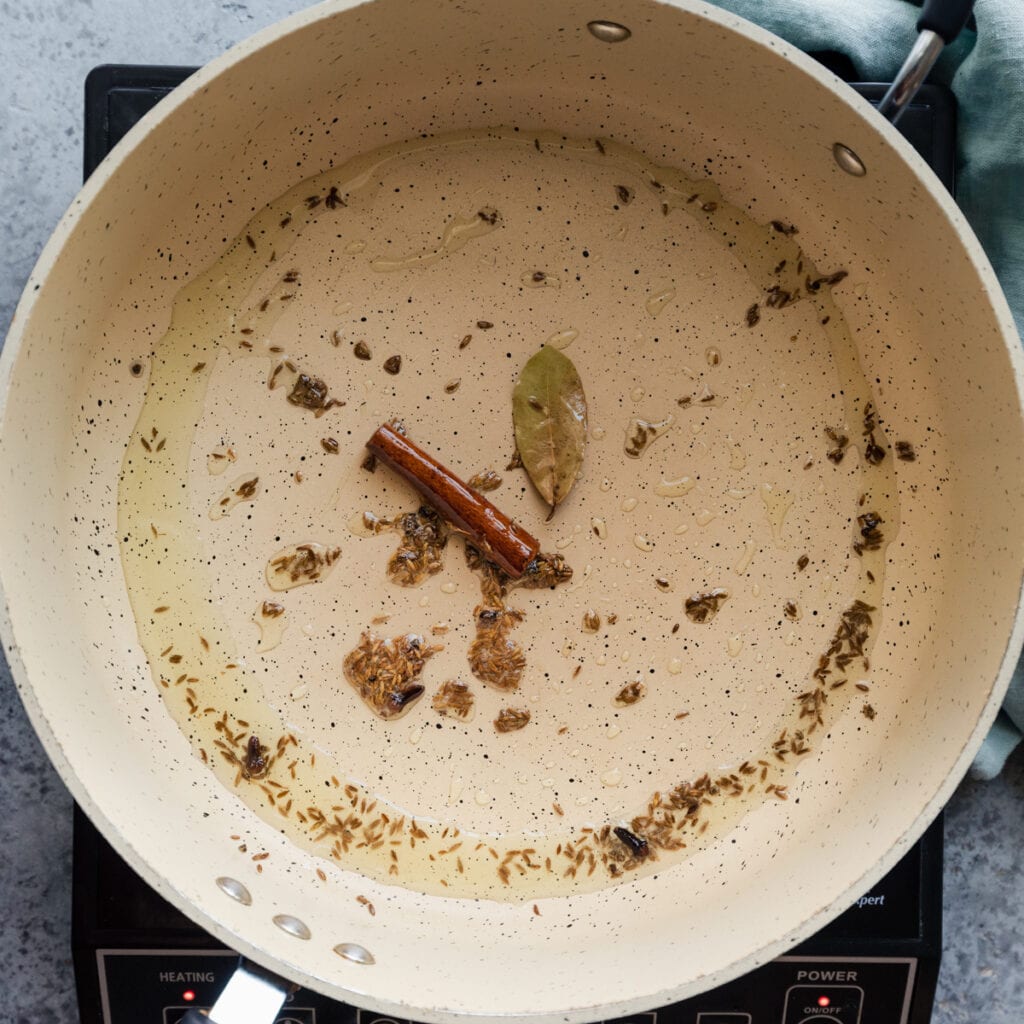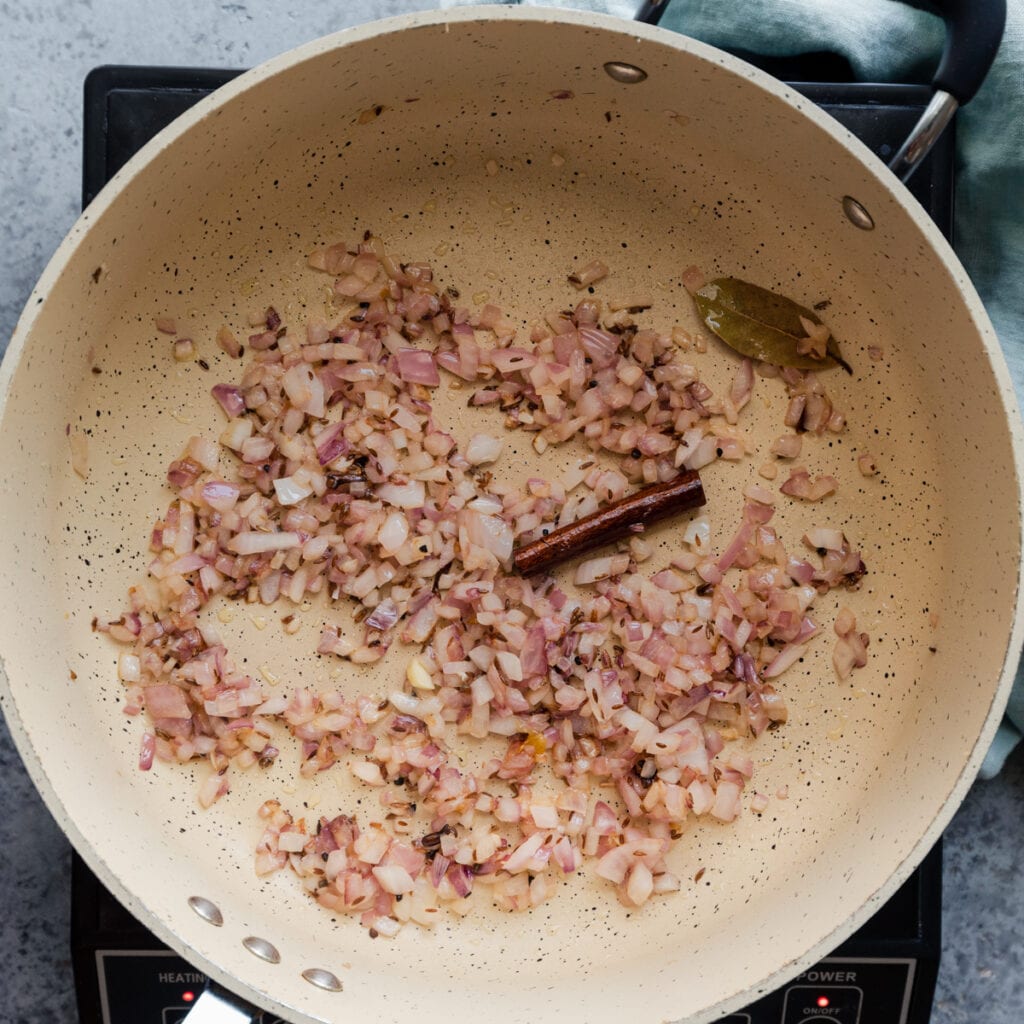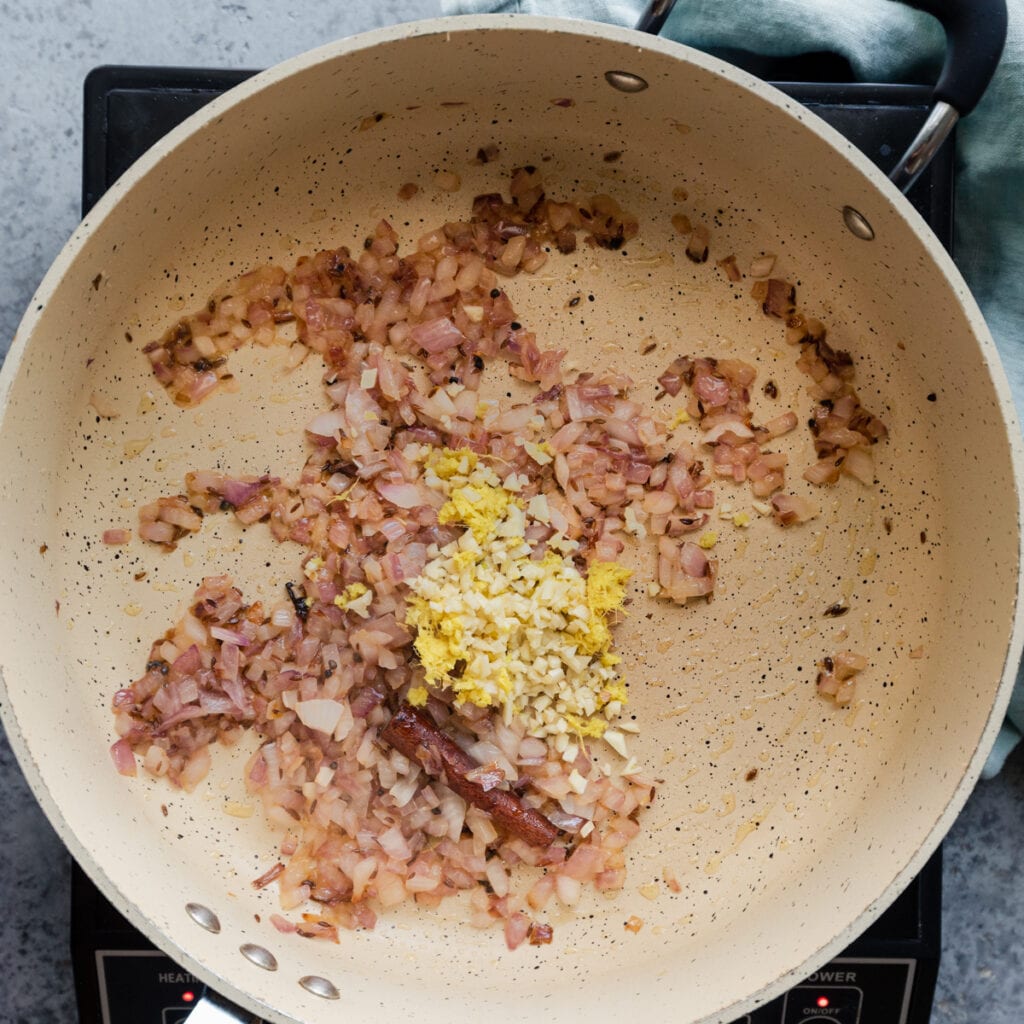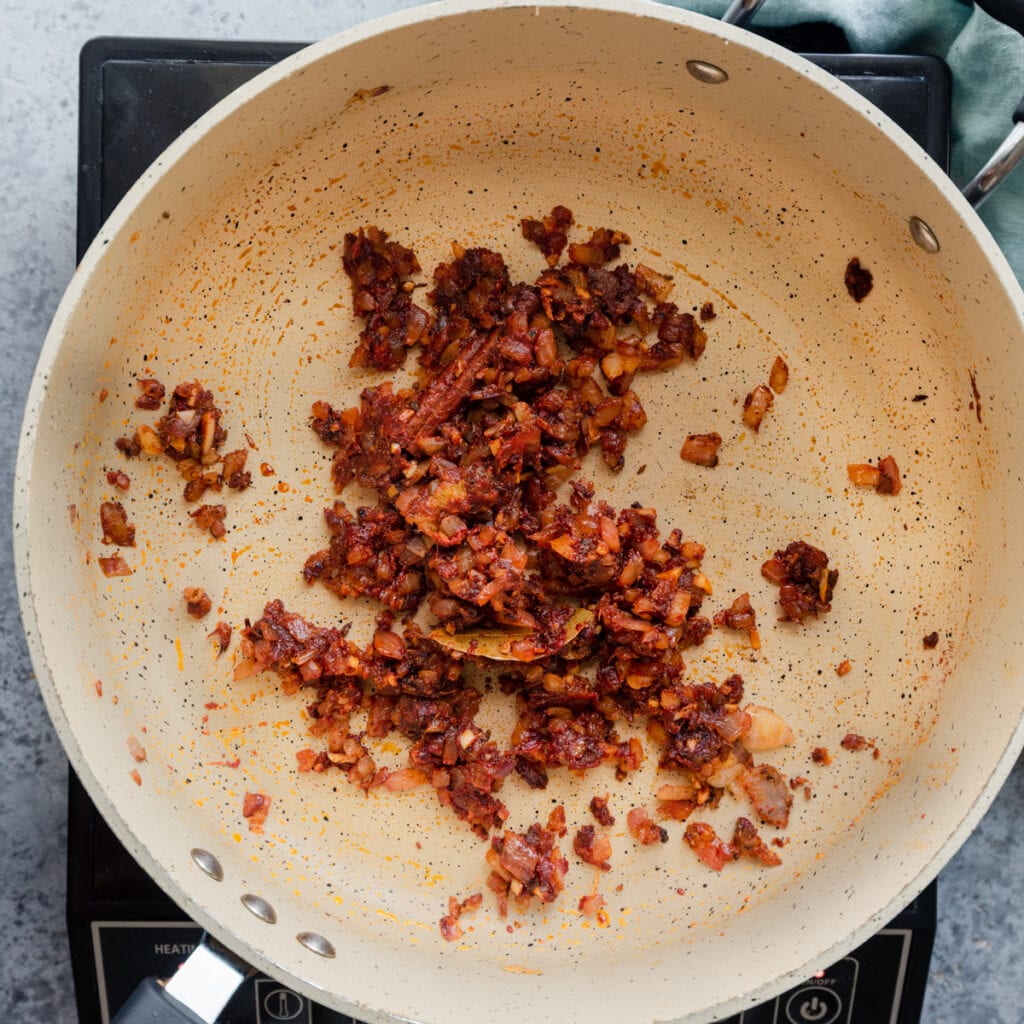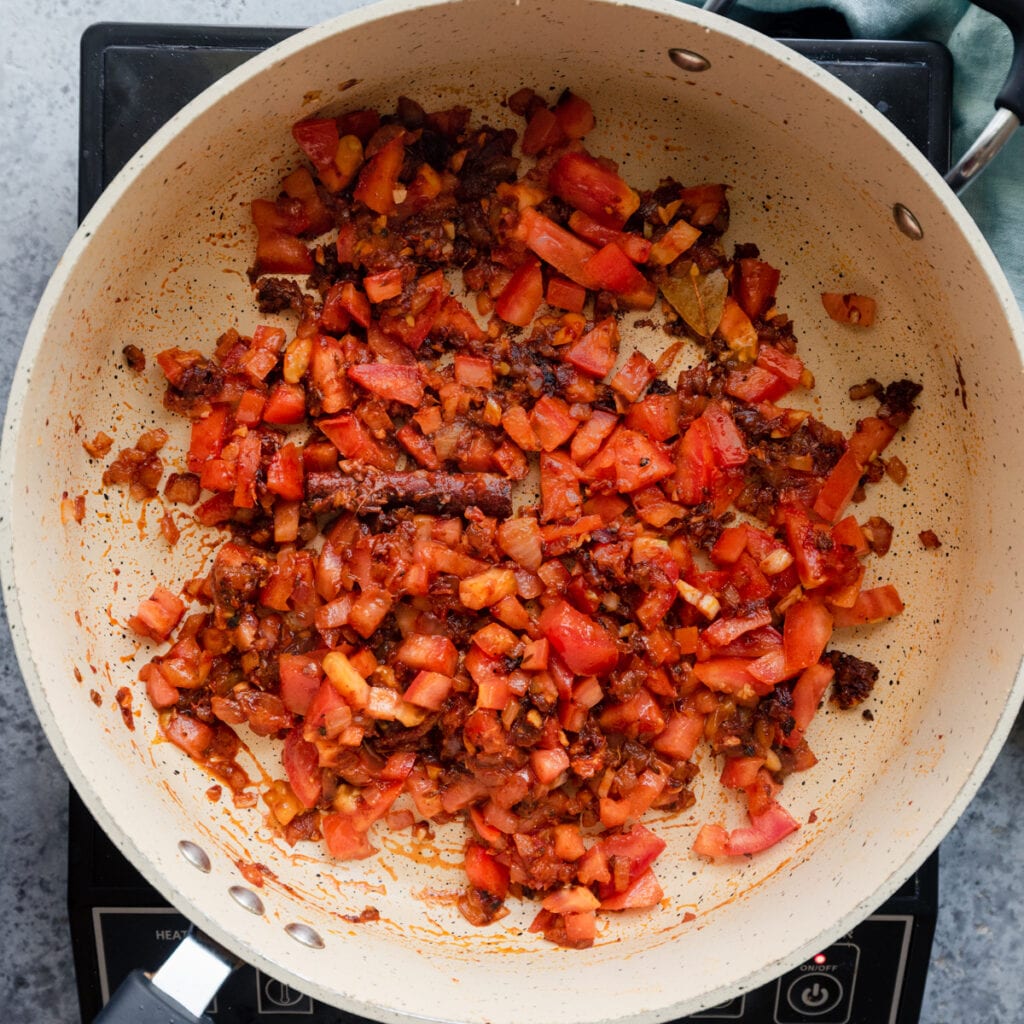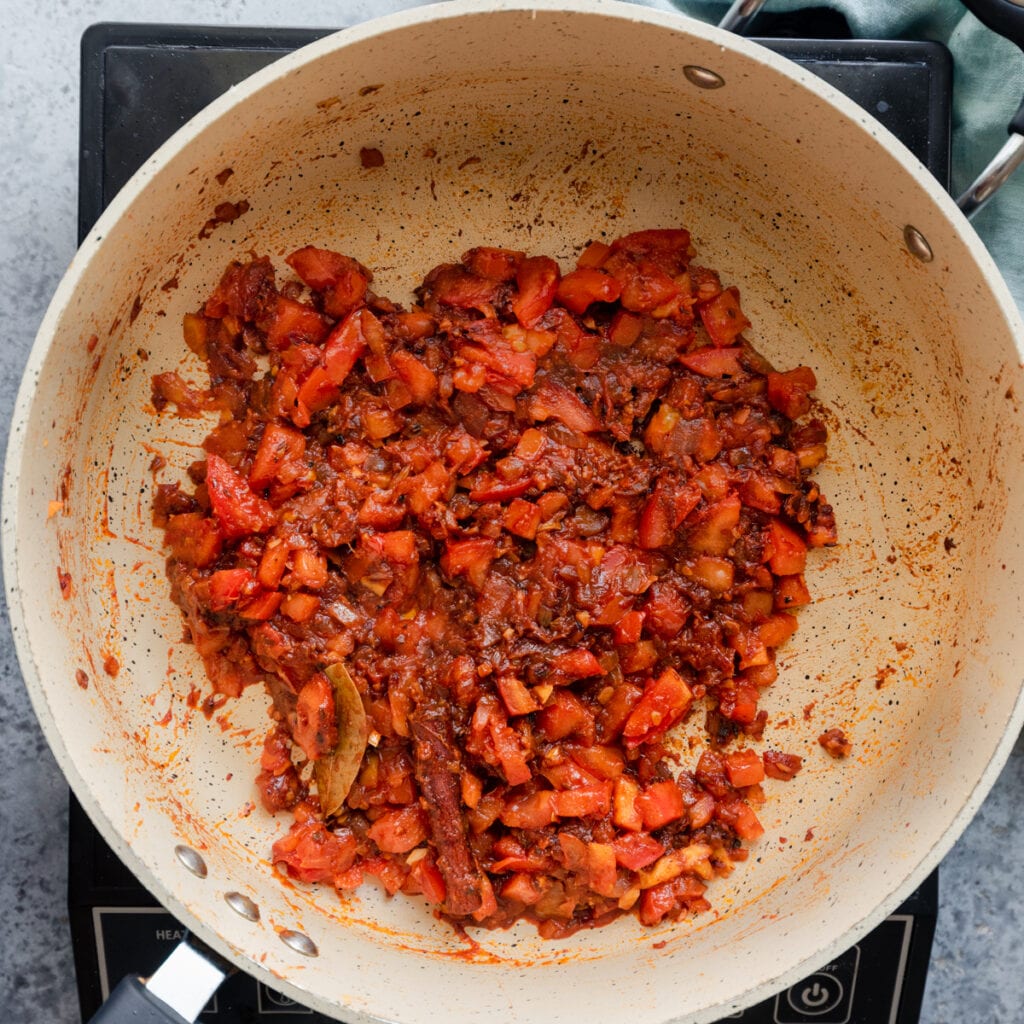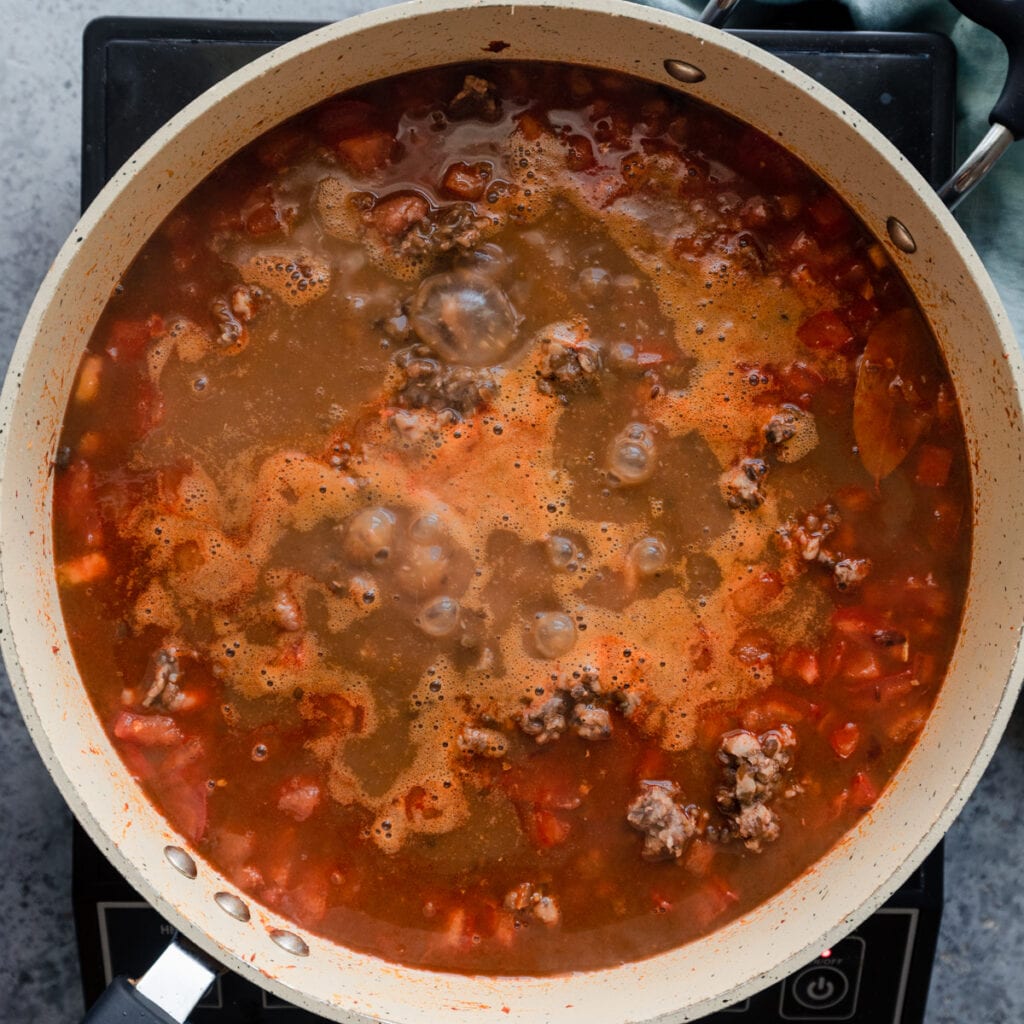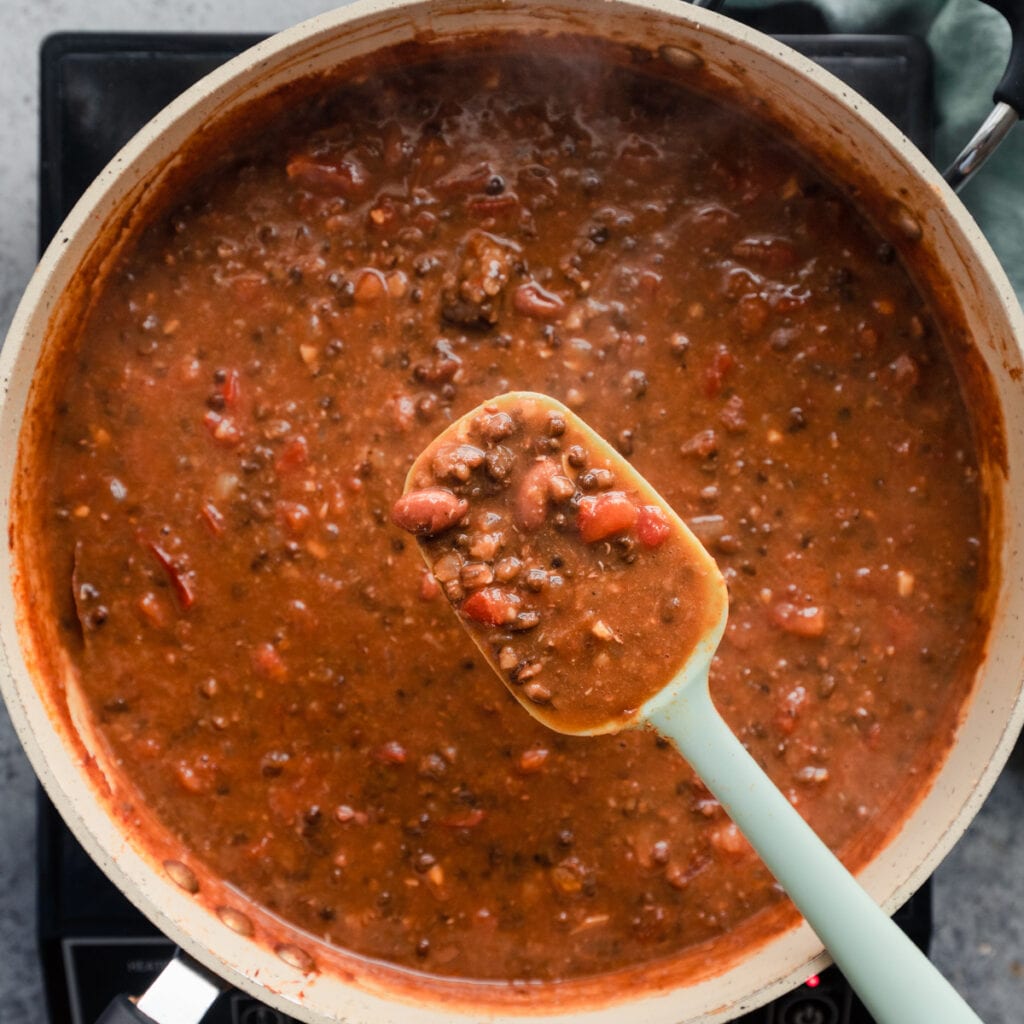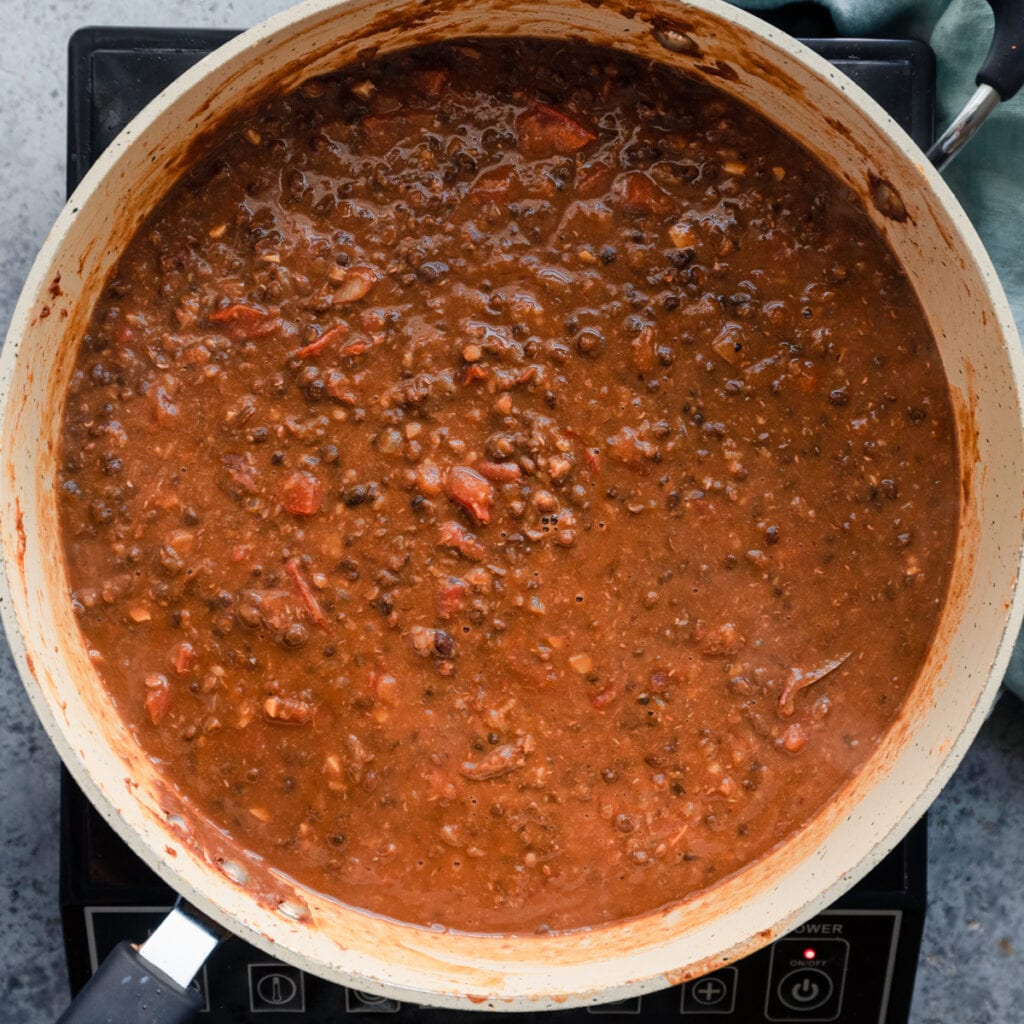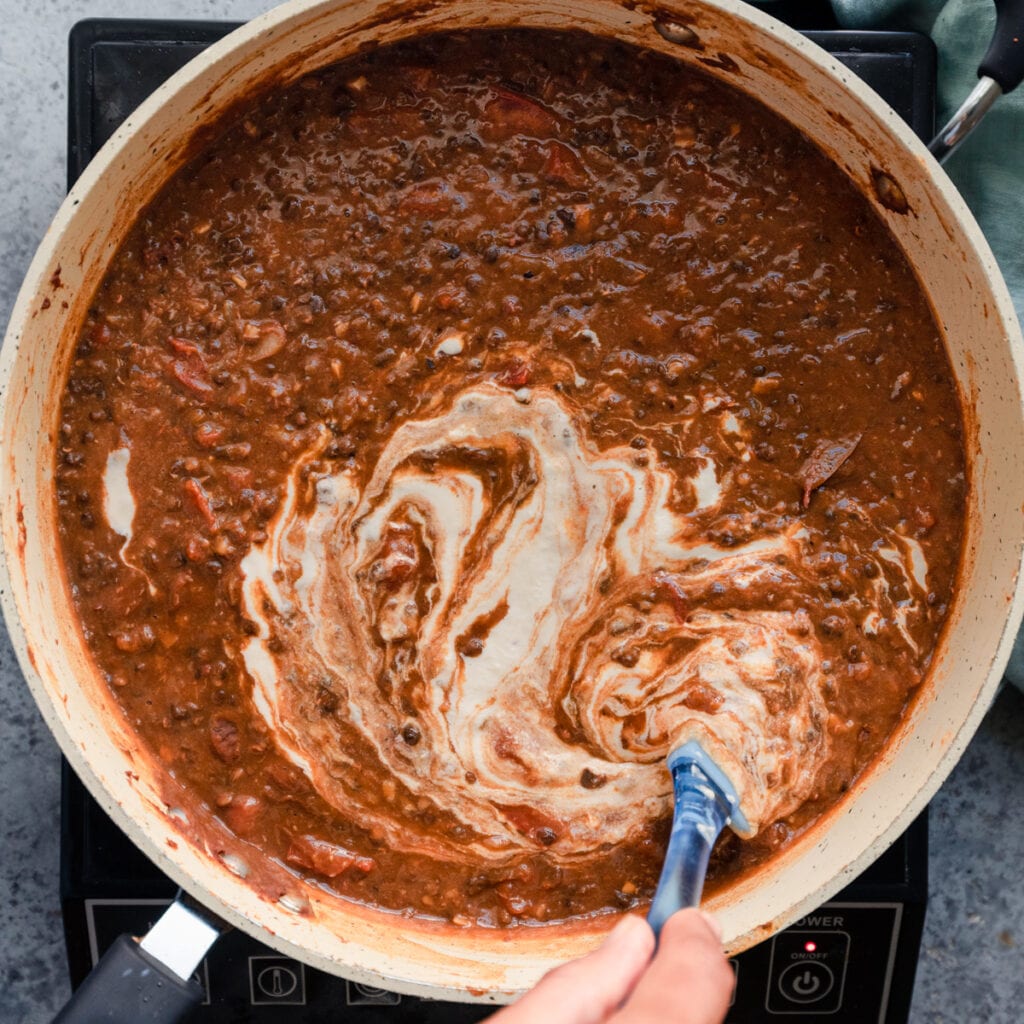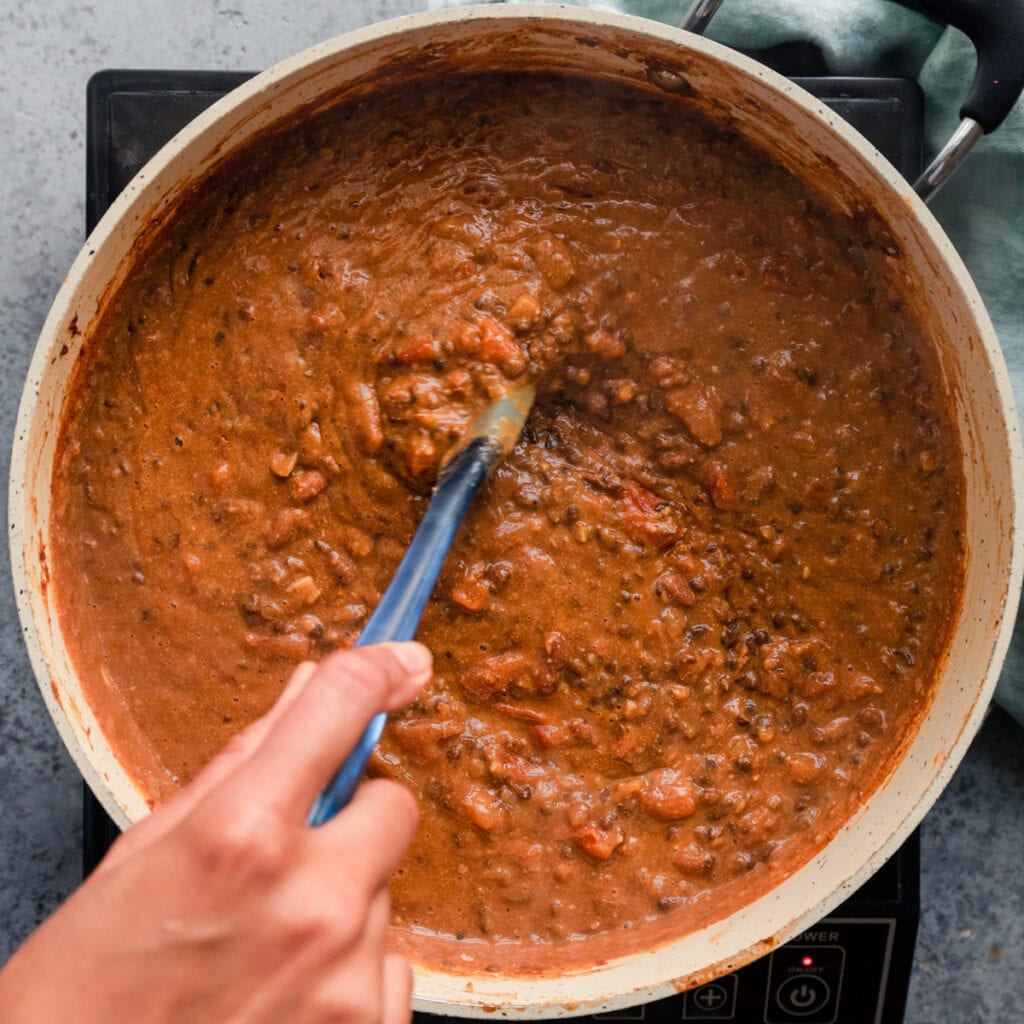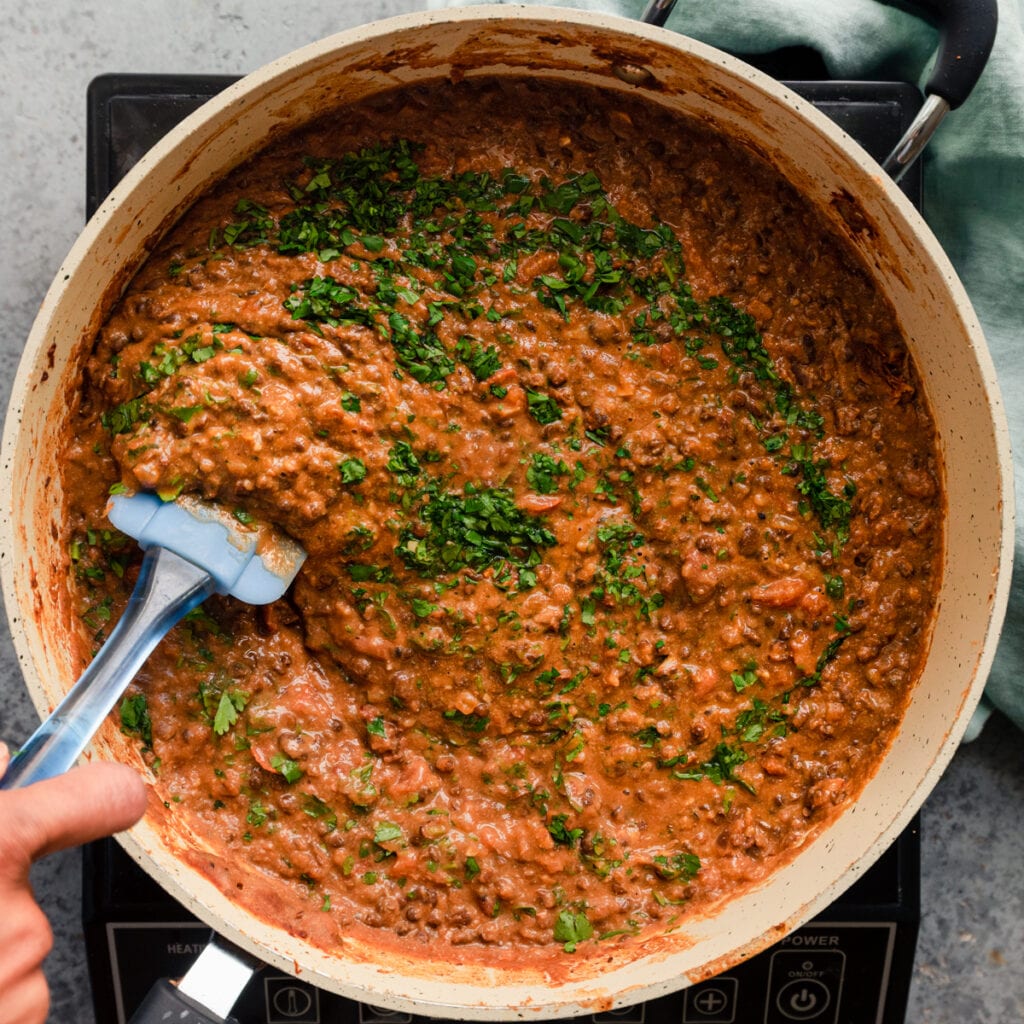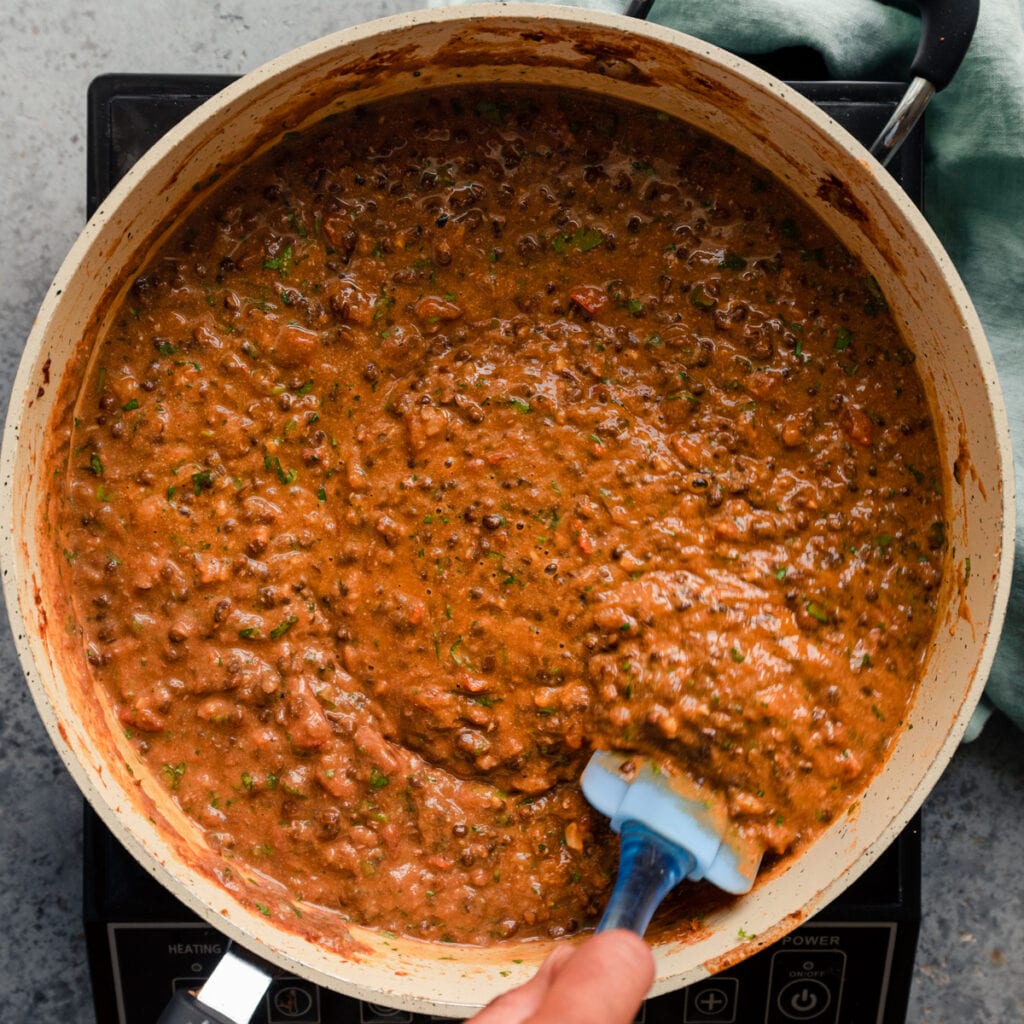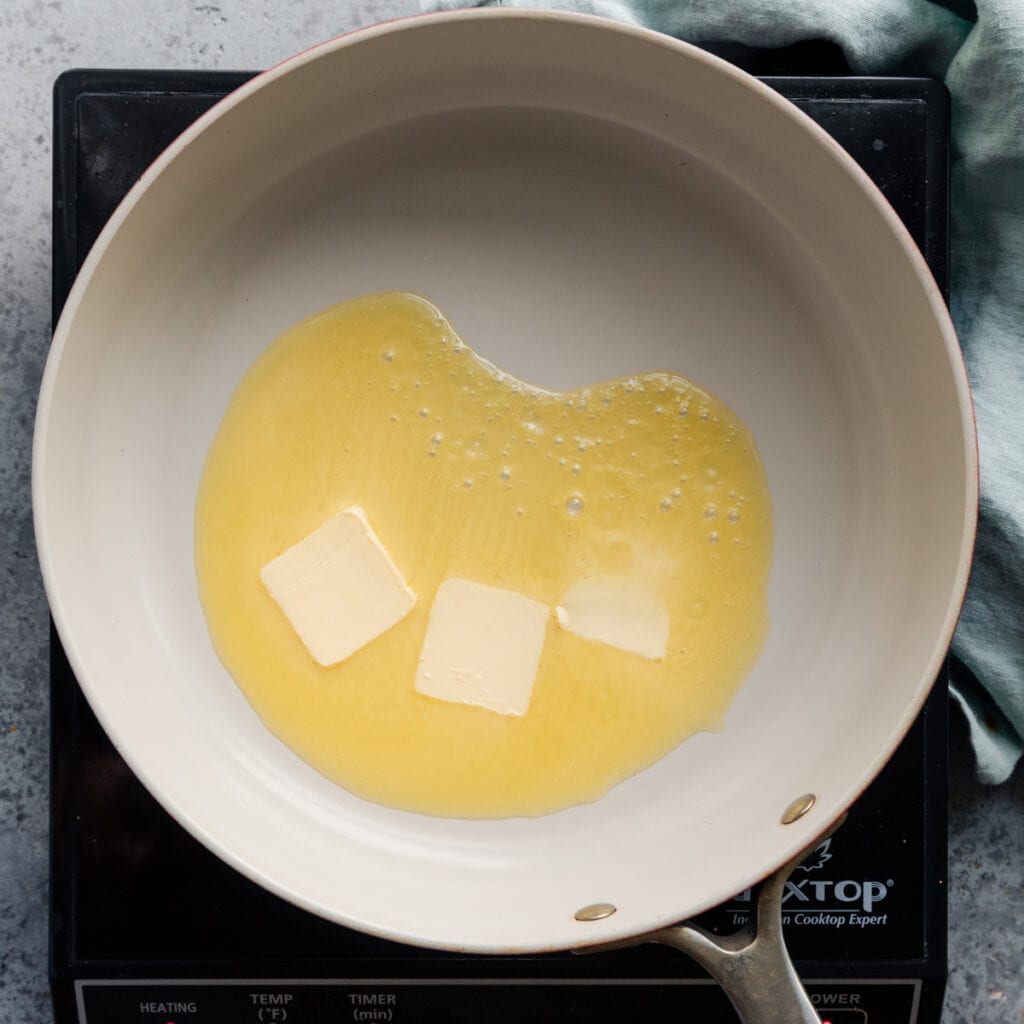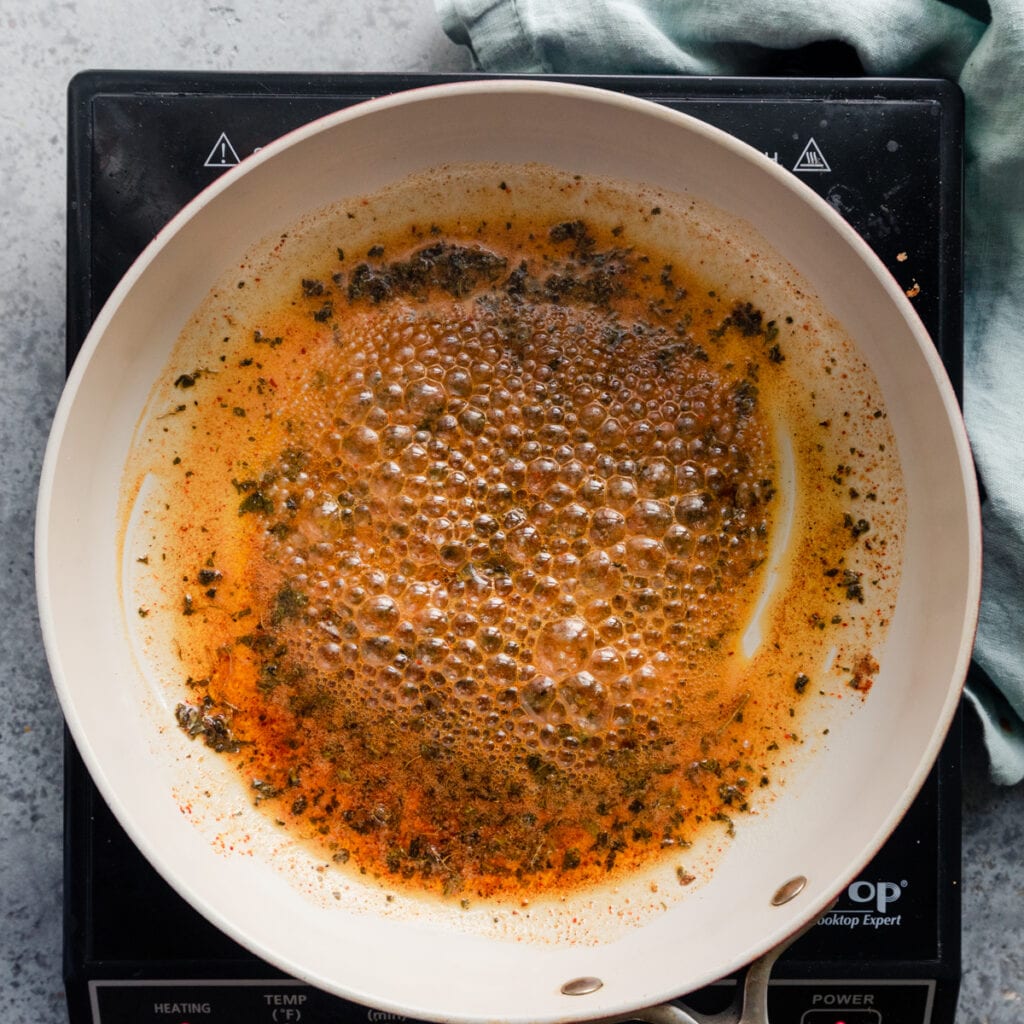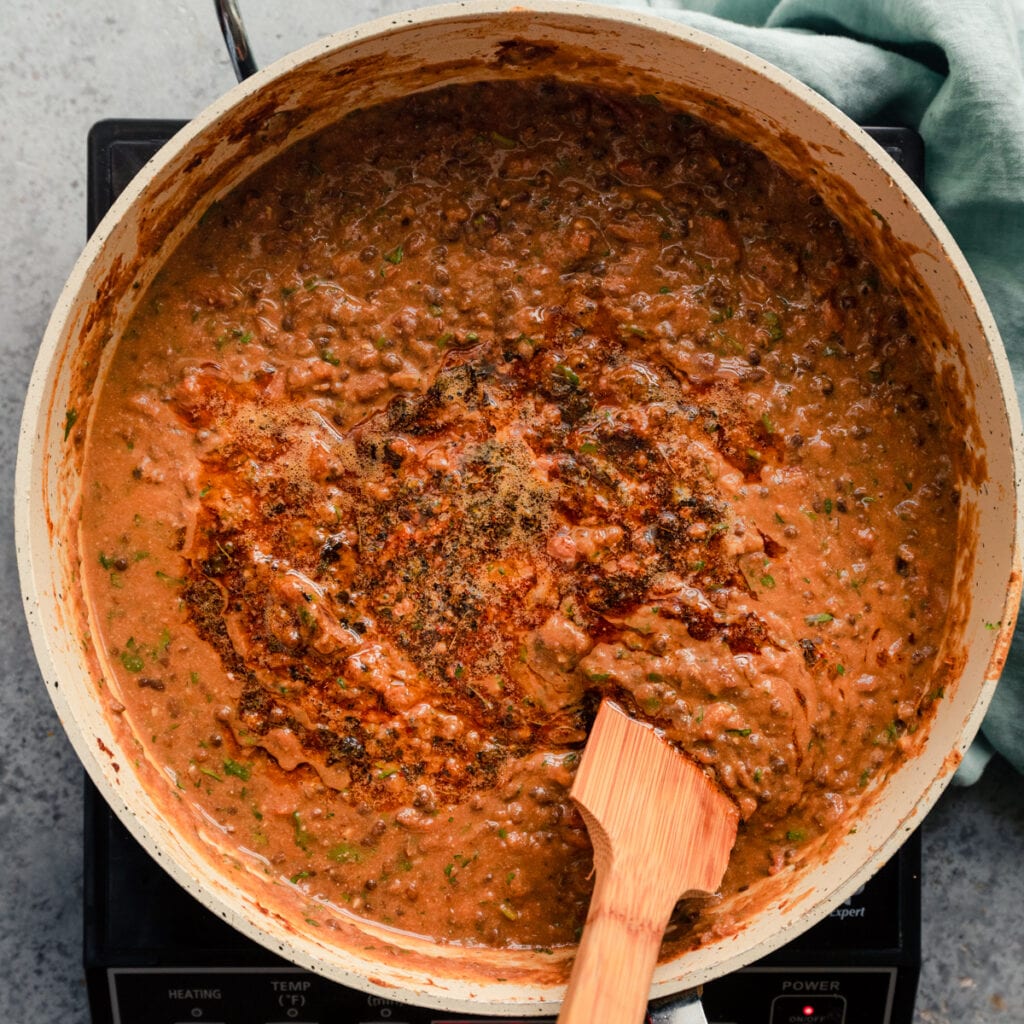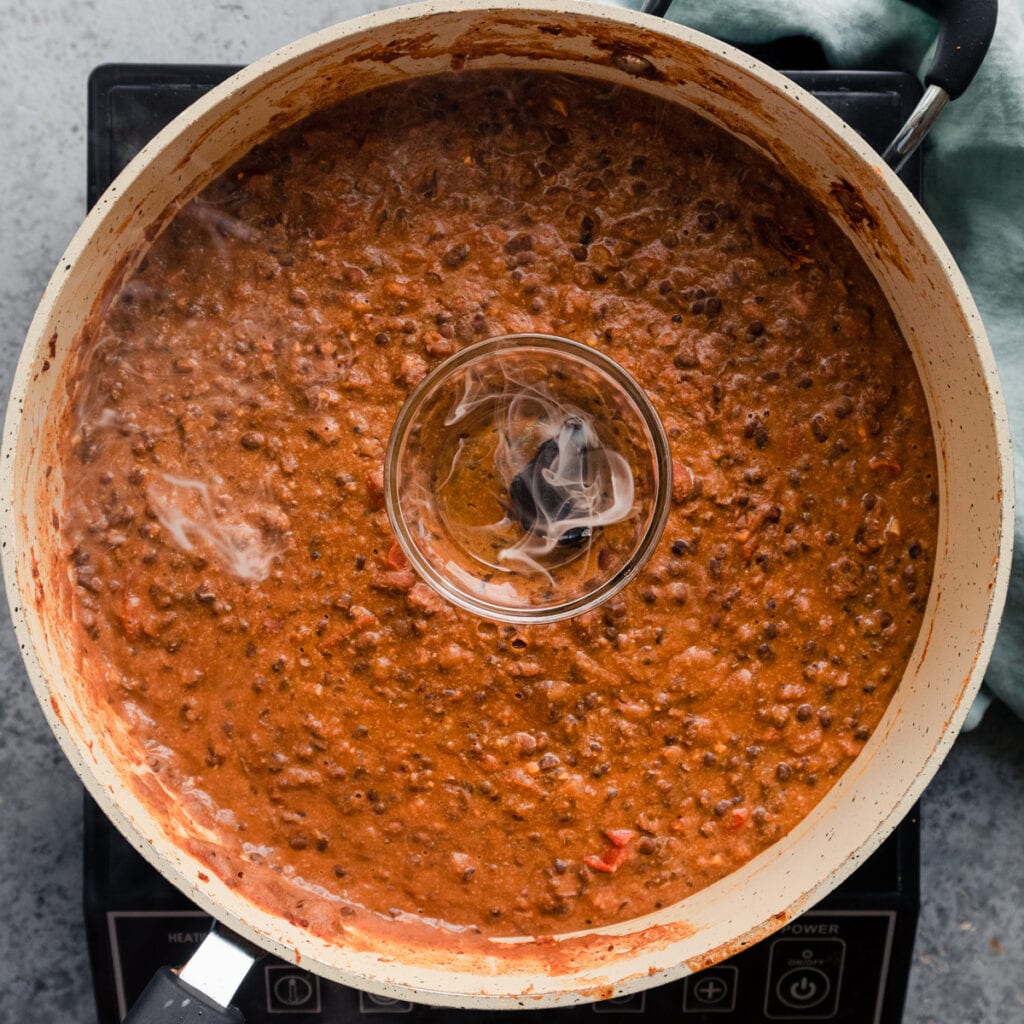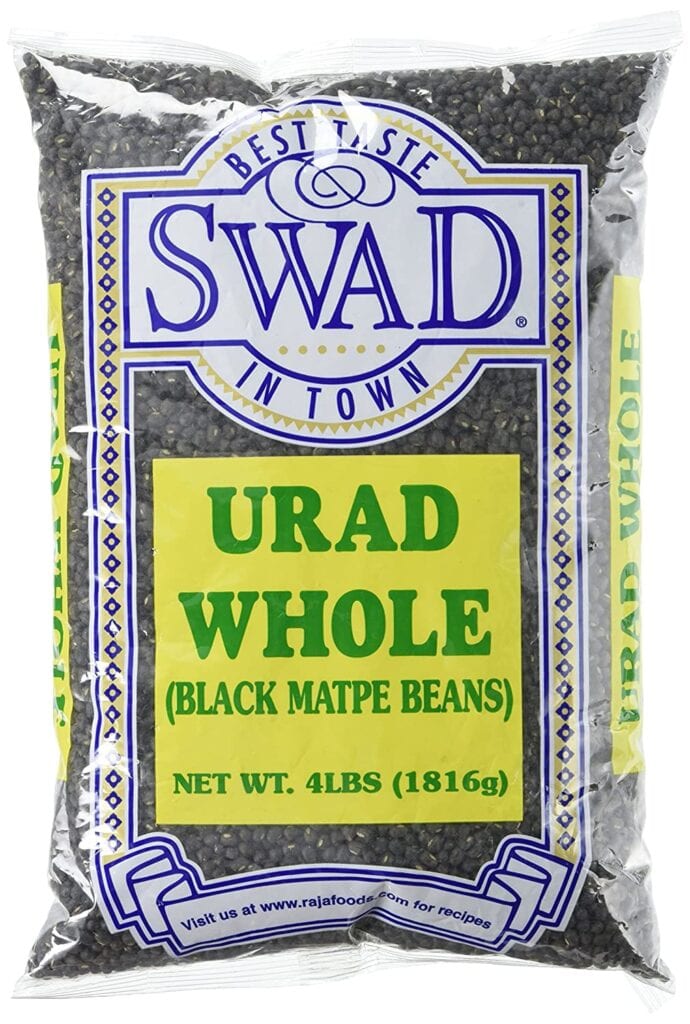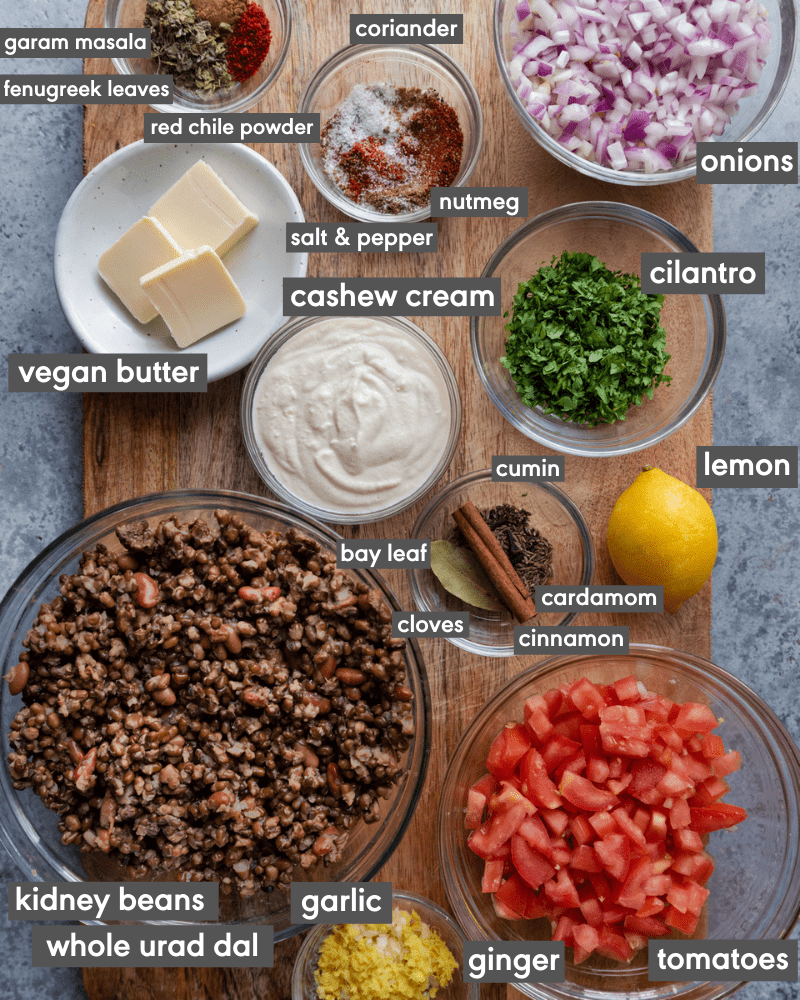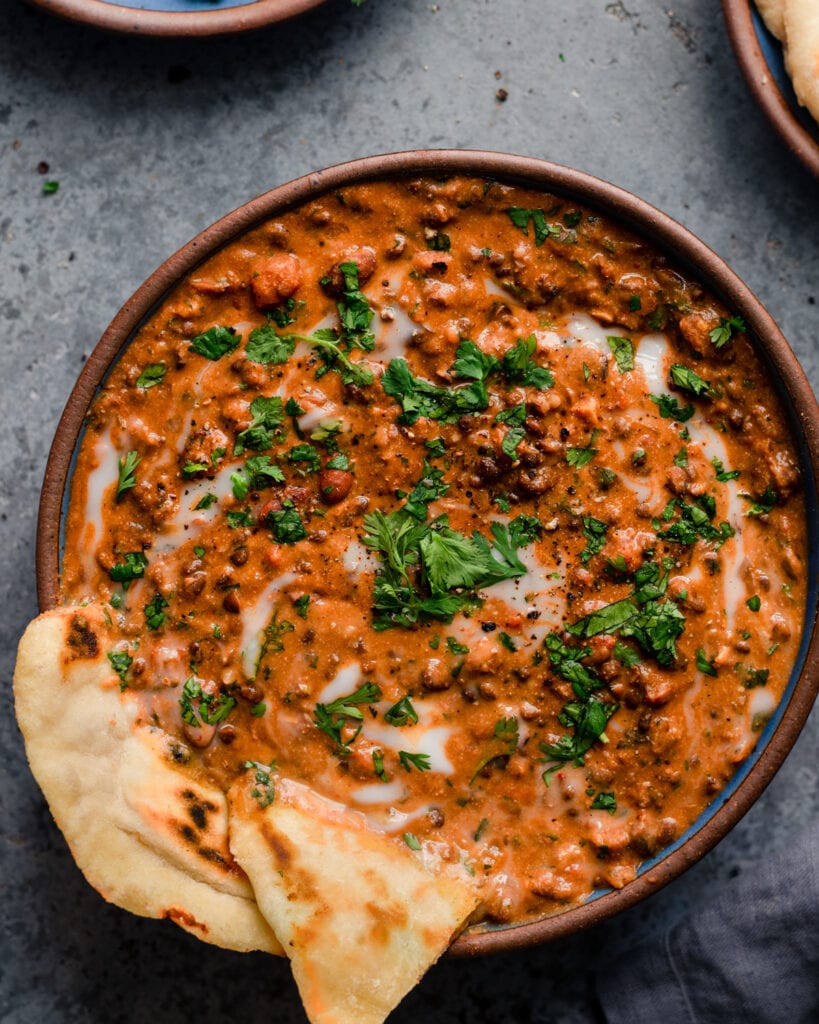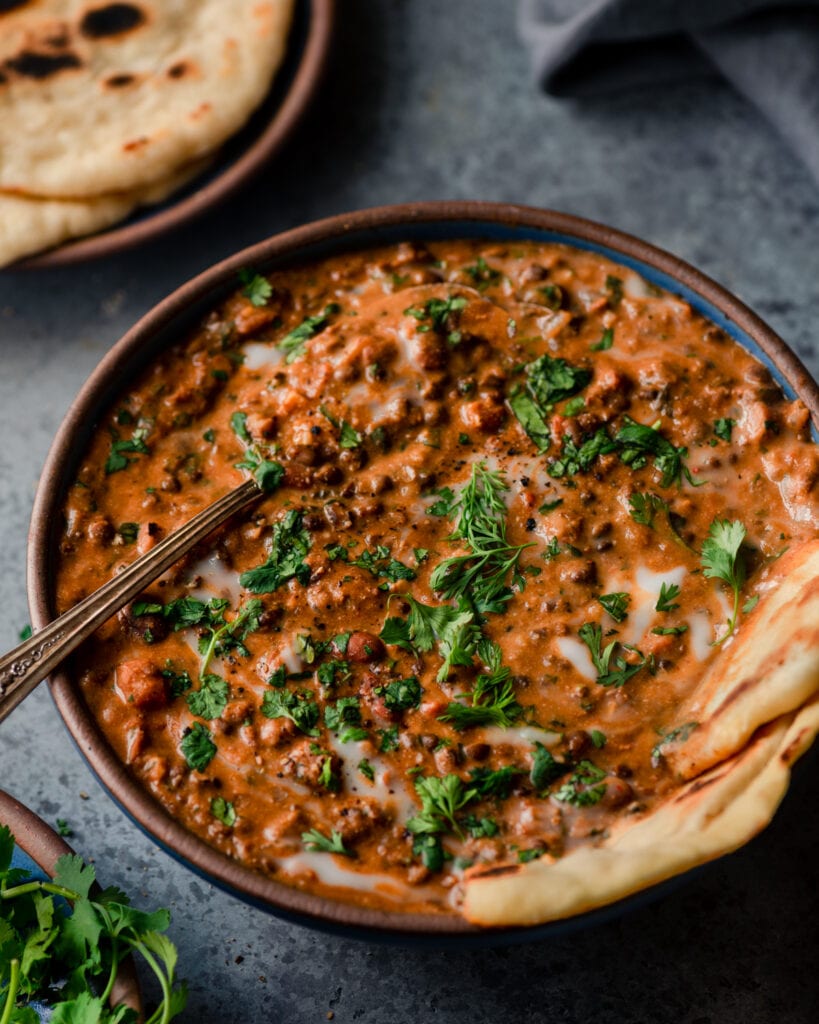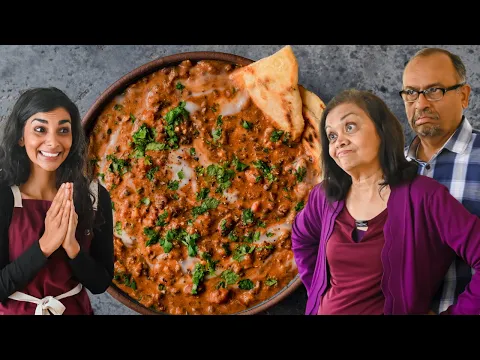This recipe is a labor of love and is not a weeknight, Westernized version of an Indian recipe. That’s because traditional Indian recipes are not quick; they layer so many different spices and flavors, and cooking them together takes time to meld into a harmonious dish that will delight your tastebuds. So, if you’re looking for authentic, gourmet, restaurant-quality Indian food that will blow your mind, this recipe is a must-make. The flavors are complex and linger on the tongue, and the texture is unctuous, velvety, and luxurious. It’s a whole experience. And an even better one when paired with my homemade vegan naan (it’s fluffy, pillowy, chewy, and buttery!). If you have an Instant Pot, I highly recommend making the Instant Pot version because it’s much quicker and just as tasty! And you can find several more Indian and Indian-inspired Instant Pot recipes in my cookbook, The Vegan Instant Pot Cookbook. There are everyday dals, the kind I ate most nights as a kid. And then there are dals for fancy times, and Dal Makhani squarely falls into the latter camp. It’s incredibly rich and sumptuous and quite possibly my favorite dal. Dal Makhani is a North Indian dal that originated in the Punjab region of modern-day India and Pakistan. It was officially “invented” by well-known chef and restaurateur Kundan Lal Gujral in the mid-20th century, but has origins dating further back (read more about the history of Dal Makhani here). Fun fact: Dal Makhani has the same flavors as the popular “butter chicken” (i.e., murgh makani). Dal Makhani is made with (1) whole urad dal (also known as black gram). Whole urad dal look like black lentils and are often marketed as such, but they’re not actually lentils. They’re the seeds of a leguminous plant called Vigna mungo, and have a thin black coating and an inner white seed. Many recipes, including mine, also include a small amount of (2) kidney beans, commonly referred to as rajma.
How to make Vegan Dal Makhani
Note: you can find Instant Pot instructions in the recipe card below. Keep on reading to learn how to make authentic-style but vegan Dal Makhani at home (including how to achieve that subtle smoky taste without using a tandoor oven!). Want more gourmet veganized Indian recipes? Don’t skip these! – Aloo Gobi: Roasted potatoes and cauliflower are coated in a fragrant and flavorful masala. – Palak “Paneer”: An easy but gourmet plant-based take on palak paneer that’s indulgent but nourishing.– Tofu Tikka Masala: A creamy and complex spin on chicken tikka masala that’s wow worthy. – Malai Kofta: Crispy dumplings in a creamy, spiced curry. Perfect celebratory dish! Start by rinsing the dried whole urad dal and kidney beans several times, scrubbing them as you go. This helps remove some of the color from the black “lentils” so the end color of the dal is a nice reddish-brown color, and any debris. Add to a large bowl, cover with a few inches of water, and add a teaspoon of baking soda. Soak 8 hours, or overnight. Drain the pulses and rinse several times until the water runs clear. Add the pulses to a saucepan, cover with water, and season with salt. Boil for 10 minutes; reduce heat to a simmer, and simmer for 80 to 90 minutes until both are very soft. Note: if using the Instant Pot method, you need to soak the beans but you can skip this step of pre-cooking the beans. Fit a colander over a bowl and drain the pulses, reserving the cooking liquid. Measure out the cooking liquid and add enough water to make 3 1/2 to 4 cups. Roughly mash the pulses with a potato masher, large wooden spoon, or fork. Heat a deep sauté pan over medium-high heat with a bit of oil. Once hot, add the whole spices (cinnamon stick, cloves, cardamom, cumin seeds, bay leaf). Toast briefly until aromatic. Add the finely diced onion and cook until lightly browned, 5 to 7 minutes. Add the ginger and garlic and cook for 1 minute, stirring frequently. Stir in the ground spices (coriander, nutmeg, Indian red chile powder), salt, pepper, and tomato paste. Cook down for 60-90 seconds, stirring frequently. Add the diced tomatoes (and their juices). Cook for 2-3 minutes until softened. Pour in the bean liquid/water, mashed pulses, and bring the mixture to a boil. Once boiling, reduce to a gentle simmer and simmer for 70 to 90 minutes, stirring every 10ish minutes. If it starts to dry up, add freshly boiled water from a kettle. This is what it looked like after 45-50 minutes. This is what it looked like after 80ish minutes. Once the dal is quite thick, add the coconut milk or cashew cream. Simmer for another 10 minutes, stirring once or twice to prevent sticking. The dal should be very creamy by now. If it’s too thick for your liking, stir in a bit of freshly boiled water. Smoke the dal (optional). See the next section for instructions on the Dhungar method. Stir in the chopped cilantro and lemon juice, and taste for seasonings, adding salt as needed. Fish out the cinnamon stick and bay leaf. Make the tadka. Heat the vegan butter in a frying pan over medium-high heat. Once melted and frothy, crush the kasoori methi (i.e., fenugreek leaves) with your hands into the dal, and add the garam masala and Indian red chile powder. Stir and swirl the pan frequently for 30 seconds, then take off the heat. Pour the tadka on top of the dal and stir in.
How to infuse a smoky taste into Dal Makhani
Dal Makhani is traditionally cooked in a clay oven or over a wood fire, which brings a smoky taste. To replicate that at home, I use the dhungar method, a South Asian technique of coal smoking food. The smoky flavor is subtle but makes the dal even more irresistible and gives it that je ne sais quoi.
Dhungar method instructions
For more visual details, please watch the YouTube video (or below) around the 06:00 mark. If you don’t want to do this step, rest assured, this dal is still very delicious! You can also try adding ½ to 1 teaspoon smoked paprika to the ground spices for a smoky taste.
Ingredient Notes and Substitutions
Kidney Beans. If you are cooking the stovetop version and want to speed it up a bit, you can (a) omit the kidney beans and use an additional 1/4 cup of whole urad dal; or (b) use canned kidney beans. If using canned kidney beans, a few changes: (1) when cooking the whole urad dal, you don’t need to boil it for 10 minutes, and the dal will get soft in a shorter period of time, about 40 to 60 minutes (instead of 80 to 90 minutes); (2) use about 3/4 to 1 cup of canned kidney beaans; (3) roughly mash the beans before adding them to the pot when you add the cooked urad dal and liquid. Whole urad dal. While these are often referred to as black lentils, they are not lentils and are quite different from the black lentils used in Western cooking (e.g., black beluga lentils). When cooked, black beluga lentils do not get creamy, and therefore aren’t the best option for this sumptuous dal. If you have a South Asian grocery store in your area, I encourage you to visit it and buy whole urad dal (and lots of spices!). You’ll be supporting what is most likely a family-run small business, the prices are much better than at Western grocery stores, and you’ll be able to enjoy this dish as it’s meant to be. That said, if you really want to make this dish but don’t have a South Asian grocery store nearby and don’t want to purchase them online, you can substitute a different lentil, like black beluga or green/brown lentils. Again, they don’t soften in the same way, so you’ll get a less creamy result. To rectify some of that, you might want to use less liquid. PS: you’re looking for whole urad dal (split urad dal is white and smaller). Cashew cream vs. coconut milk. Since Dal Makhani typically has cream, the best vegan substitutes are cashew cream and full-fat canned coconut milk (you don’t need much, just 1/2 cup), from a fat content and a creaminess content. I’ve tried this recipe with both and it’s really tasty either way. I do particularly love it with cashew cream. The neutral yet nutty flavor of cashews works so well with the Indian spices and lentils (cashews are fairly common in Indian cuisine), and the creamy texture is even better than coconut milk. Of course, making cashew cream requires you to get a blender dirty and soak some cashews (or least boil them for 15 minutes). Since this dish is requires a long simmer time, I just make the cashew cream during the simmering. But, if you want to do less work, use the coconut milk. Vegan butter. Again, traditional Dal Makhani is known for its butter, so I use a few tablespoons of vegan butter. If you prefer to not use vegan butter, you can sub a neutral-flavored oil (though you won’t have the exact same rich, buttery mouthfeel).
Tips for making Vegan Dal Makhani
Be patient, or use your Instant Pot. As mentioned, slow simmering is what yields that unctuous, luscious texture, so this dish can’t be rushed (at least on the stovetop). If you want to make this recipe much more quickly, use the Instant Pot method. You don’t need to pre-cook the pulses, the pressure cook time is 35 minutes, and it’s hands off, so you don’t have to stir ever so often. And the results are remarkably similar in texture and taste. If making the stovetop method and you don’t want to cook everything all in one day, you can pre-cook the beans and lentils 1 to 2 days in advance. When pre-cooking the dried kidney beans, be sure to let them boil (not just simmer) for the first 10 minutes. Kidney beans contain lectin, a protein that’s hard to break down in digestion. If kidney beans are eaten undercooked, they can cause you to get quite sick. When pre-cooking the whole urad dal and kidney beans on the stove, if the water starts to evaporate quite a bit, add freshly boiled water from a kettle to keep them covered. If you leave the pot for 90 minutes and don’t check on it at all (like I did a few weeks ago), the beans and lentils will burn and will be unusable. Same thing for the dal makhani itself – if it starts to dry out, stir in some freshly boiled water. When making the stovetop version, I find that it’s necessary to de-seed the whole cardamom pods. Otherwise, you might get one big concentrated taste of cardamom in a single bit, or chew on a pod. If making the Instant Pot version, just keep the pods whole (the high pressure will disintegrate and evenly mix them). This dal gets really creamy, but if you want it to be even thicker, use an immersion blender through a third or a half of the dal after adding the cashew cream/coconut milk.
Watch! How to make Dal Makhani
If you try this epic vegan Dal Makhani recipe and love it, please be sure to rate and review it below!
Big Vegan Flavor
Techniques and 150 recipes to master vegan cooking.
Big Vegan Flavor
Techniques and 150 recipes to master vegan cooking.
